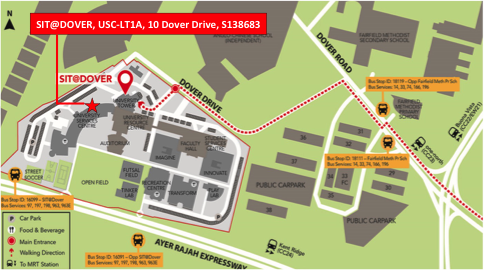
- This event has passed.
The Application & Technology of Floating Structures
March 1, 2018 @ 8:30 am - 1:30 pm
The Society of FLOATING SOLUTIONS (Singapore) is pleased to invite you to attend
a half-day conference on
THE APPLICATION & TECHNOLOGY OF FLOATING STRUCTURES
1 March 2018 @ Singapore Institute of Technology, University Service Centre LT1A,
10 Dover Drive, S138683
Object of Conference
The object of the conference is to demonstrate the potential of floating structures as a disruptive space solution to overcome Singapore’s land crunch. This conference discusses topics, which would appeal to marine engineers, civil and structural engineers, naval architects, architects, town planners, policy makers, academics and students in the offshore industry, shipyard industry, classification societies and universities. This conference will also include the official launch of the Society of Floating Solutions (Singapore) or SFSS for brevity.
Our Distinguished Speaker
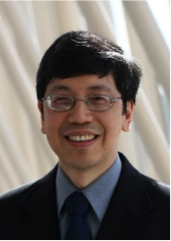 Professor Chien Ming Wang
Professor Chien Ming Wang
Prof. C.M. Wang is the TMR Chair Professor in Structural Engineering, The University of Queensland. He is a Chartered Structural Engineer, a Fellow of the Institution of Engineers Singapore, a Fellow of Academy of Engineering Singapore, a Fellow of the Institution of Structural Engineers and a Fellow of the Society of Floating Solutions (Singapore). His research interests are in the areas of structural stability, vibration, plated structures and Mega‐Floats. He has published over 420 journal papers and co-authored 9 books such as Very Large Floating Structures, Structural Vibration, Shear Deformable Beams and Plates. He is an Editor‐in‐Chief of the International Journal of Structural Stability and Dynamics and an Editorial Board Member in several journals including Engineering Structures, International Journal of Applied Mechanics, and Ocean Systems Engineering. He has won many awards that include the IStructE Singapore Structural Awards 2016, Keith Eaton Award, Lewis Kent Award, IES Prestigious Engineering Achievement Award, and the Grand Prize of the Next Generation Container Port Challenge.
 Dr. Øyvind Hellan
Dr. Øyvind Hellan
Dr Øyvind HELLAN has more than 30 years of experience in R&D, research management and innovation/business development. He has graduated from the Norwegian Institute of Technology with a Master in Structural Engineering and a Ph.D. in Marine Technology. He started work as SINTEF in 1984 and has since then held various position within the Institute. His early scientific career focused on development of numerical methods and advanced software for integrity assessment of offshore jacket structures. This was followed by a period of cross-discipline research involving structural engineering, ship technology, offshore hydrodynamics and cybernetics. Hellan then took on the role as coordinator of all R&D activities within pipeline technology and flow assurance within the SINTEF Group, and as project manager for development of the next generation multiphase flow simulator for the oil&gas industry. Hellan was the first CEO of Instituto SINTEF do Brasil, and was later Head of Department for the Offshore Hydrodynamics department in Marintek, including the Ocean Basin. He is now Vice President in SINTEF Ocean , with responsibility for Strategy and Business Development.
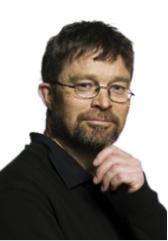 Mr Arnstein Watn
Mr Arnstein Watn
Arnstein Watn is CEO of WatnConsult AS, senior researcher at Norwegian University of Science and Technology (NTNU) and is acting as Senior Adviser to SINTEF. He has an MSc in geotechnical Engineering from NTNU 1981. Watn has more than 35 years of experience from work in Public authority, consulting company, university and research institute. His special field of interest is in underground and foundation engineering and climate adaptation of structures and transport infrastructure. He has been project manager for a number of research and development project nationally and internationally. Watn has more than 150 publications in Journals, conferences and seminars nationally and internationally. Watn has been working in co-operation with partners in Singapore since 2003 and is currently involved in the construction work on the Jurong Rock Caverns with company Tritech and the research project on Multi Purpose Floating Structures with NUS.
 Mr Masaki Takeuchi
Mr Masaki Takeuchi
Mr Takeuchi graduated with a degree in Architecture from Waseda University, Japan in 1980. He is a Qualified Architect (first class), a Redevelopment Planner and a Facility Manager. He joined Shimizu Corporation in 1980 where he is actively pursuing the use of large floating structures and is the leader of the team that put forward Maritime Future City with “Green Float” as its core concept. In December 2017, the “Green Float 2” received Nippon Kaijikyokai’s AIP (Approval in Principle.). Takeuchi was also Project leader of the Deep Sea Future City, which in December 2014 announced plans for “Ocean Spiral.” From October 2015, he led the project in investigating (experimentally and analytically) the technological realisation of a marine future city.
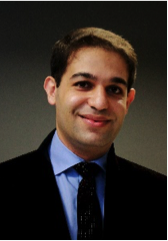 Dr Sabet Divsholi Bahador
Dr Sabet Divsholi Bahador
Dr Sabet is Managing Director of Global Engineering Creators Pte Ltd, President of Singapore Concrete Institute and 2nd vice president of the Society of Floating Solutions (Singapore). Dr Sabet set up Global Engineering Creators Pte Ltd to develop new products for building and construction sector, offer R&D services to both government and private companies and provide consultancy related to cement and concrete. He is currently offering consultancy service to companies including Housing Development Board of Singapore. Dr Sabet in collaboration with GL Engineering and Construction and Yee Precast Design consultants worked on construction of a very large concrete dry-dock (138X46 meters) with Grade 85 MPa concrete. Construction started on mid-March 2016 and was successfully launched on 1st May 2017.
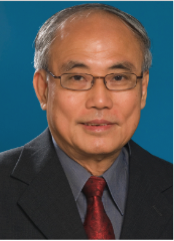 Mr. Lim Soon Heng
Mr. Lim Soon Heng
Lim, a Fellow of the IMarEST, is the President of the Society of FLOATING SOLUTIONS (Singapore). He has many years’ experience working in Keppel Offshore and Marine and in the engineering and construction of steel structures for an international market including several Chicago, Los Angeles, and New Orleans. A strong advocate that floating structures is a more sustainable space solution than land reclamation, he has published several articles in the mainstream media in Singapore on floating structures and delivered talks on the subject in various countries including UK, and Australia as well as in Singapore.
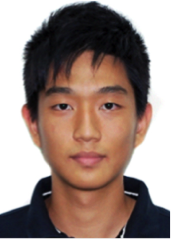 Mr Chau Chee Chung
Mr Chau Chee Chung
Mr. Chau Chee Chung, a final year civil engineering student at National University of Singapore, interned at Keppel FELS and worked under Professor Choo Yoo Sang in a project involving the design and installation of an offshore platform. Inspired by the possibility of making better use of Singapore’s precipitation by expanding water storage capacity he accepted the challenge of investigating the the concept of a floating reservoir under the mentorship of Mr Lim and the and the supervision of Dr Paul Ong at the National University of Singapore.
Conference Program
| 0830 to 0900 | Registration |
| 0900 to 0930 | Welcome, President’s Address and Official Launch of Society of FLOATING SOLUTIONS (Singapore) |
| 0930 to 1000 | Lecture 1 – Floating Solutions for Challenges Faced by Present and Future Generations
by Professor Chien Ming Wang, The University of Queensland, Australia Presented in this talk are floating solutions for solving a diverse host of challenging problems such as land crunch for infrastructure, straits and river crossings over deep waters and soft seabed, large tidal variations in harbours, expansion of port terminals in deep waters, pollution free aquaculture, energy shortage, protection of fragile shorelines and valuable assets from extreme waves, lack of vibrancy in water bodies, land scarcity for real estates and entertainment outlets, and climate refugees as a result of rising sea level due to global warming |
| 1000 to 1030 | Lecture 2: Floating and Offshore Structures in Norway by Mr Arnstein Watn and Dr Oyvind Hellan, SINTEF |
| 1030 to 1100 | Coffee Break |
| 1100 to 1130 | Lecture 3: Concrete Floating Platforms: Case Study, Floating Concrete Dry-Dock By Dr. Sabet Divsholi Bahador, Global Engineering Creators Pte Ltd Large floating concrete platforms has been around for more than 100 years. In early days, concrete technology were premature and some platforms were of low quality. However, there were good examples as well. Early concrete platforms were mostly limited to oil and shipping industry. The concrete technology had vast improvement in last two decades and newer and more sophisticated concrete platforms are heading to market. For marine concrete, maintenance free design life of few hundred years is possible. With improved technology and with backing of good historical examples, designers are now looking at application of floating concrete platforms for land development for various applications from industrial development to houses and large townships. The future is bright with floating concrete platform. Dr Sabet in collaboration with GL Engineering and Construction and Yee Precast Design consultants worked on construction of a very large concrete dry-dock (138X46 meters) with Grade 85 MPa concrete. This presentation discuss the steps and lesson learned from this project. |
| 1130 to 1200 | Lecture 4: Mega Floating City “Green Float”— Concept and Technology Innovations by Mr. Masaki Takeuchi “Green Float” is a new conception model for environmental friendly island cities, under development by Shimizu Corporation, Japan. The idea is to construct artificial islands on the ocean with the aim of achieving self-efficient zero carbon and zero emission cities. The Green Float concept embodies two areas of innovation. The one is “Green” innovation: Recognize the limits of industrialized civilization and learn from natural systems (Botanical City) and the other is “Float” innovation: Enhance new and promising possibilities of location as cities in the ocean surface (Floating City). |
| 1200 to 1230 | Lecture 5: Conceptual Design of a Modular Floating Reservoir by Mr. Lim Soon Heng, SFSS and Mr. Chau Chee Chung, NUS A country of 719 sq. km, Singapore received twice the amount of rainfall that it consumes. In spite of massive expenditure and effort over decades, it still imports water from Johor. The Johor source on occasion runs dry and has to be supplemented with desalination and water recycling plants. The 17 reservoirs take up a large fraction of the island. It can ill-afford to build more. Its population density is already one of the highest in the world. As a result of inadequate water storage capacity, much of the precipitation in a heavy storm discharges into the sea. The idea of a modular integrated floating reservoir and recreation park appears to be an attractive solution. The strategy was to transfer water from the terrestrial reservoirs offshore for temporary storage at sea and to return it to land during a dry spell. Lim propose the concept to the National University of Singapore for consideration as a final year student project. Student Chau Chee Chung (see bio above) undertook the challenge. He will present his preliminary findings. |
| 1230 to 1330 | Lunch |
Fee
Cash payable at registration desk: SGD 20*
*Members will receive a $5 refund, Non-members will receive a $5 refund if they apply and qualify for membership. Students will receive $15 refund after the event when proof of the attendance and status is verified. (SIT students may attend free on presenting their Student ID)
Registration
Please register HERE.
Contact Persons
Mr. Anil THAPAR
Email: anil.thapar@bmtglobal.com
Tel: +65 6517 6809(O) +65 9272 0150 (HP)
Dr. TAY Zhi Yung
Email: zhiyung.tay@singaporetech.edu.sg
Tel: +65 6592 1944 (O), +65 9876 0496 (HP)
